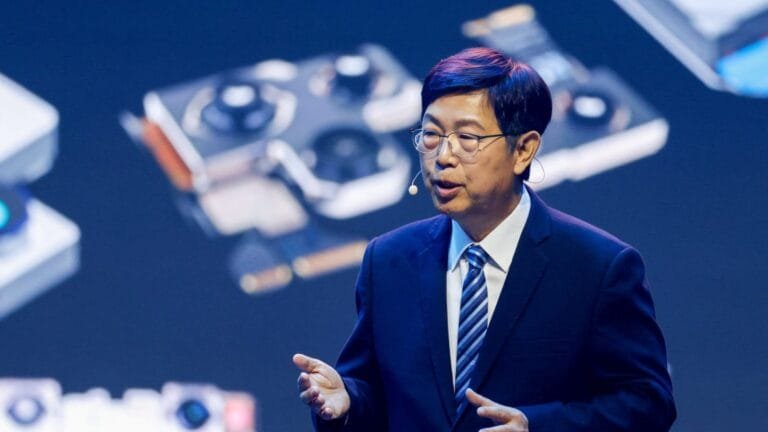
Amazon partners with OpenAI in a $38 billion deal to boost global AI infrastructure.
Introduction: Amazon OpenAI AI deal
“Artificial Intelligence” (AI) has become a major topic in today’s technology world. For years, major tech companies have been making significant investments in AI models, cloud infrastructure, data centers, and chips (especially GPUs). When a giant like Amazon finally jumps into a major AI-related deal, it’s not just a business move, but also a strategic signal that it’s trying to shake off the “lagging behind” tag.
Background: Amazon, OpenAI, and the State of the AI Market
For some time, Amazon was considered a laggard in areas like AI model training and cutting-edge “generative AI.” For example, when it came to AI models and large language models (LLMs) like ChatGPT, Microsoft and Google accelerated. According to a Reuters report, AWS’s cloud market share had dropped from 34% to 29%. This led some analysts to label Amazon “a laggard in the AI race.” OpenAI has stated that “scaling frontier AI requires efficient and reliable compute.” This has also sparked an infrastructure battle between AI companies and cloud providers.
Details of the Agreement – A $38 Billion Deal
The estimated value of the deal is approximately $38 billion. Under this agreement, Amazon (AWS) is promising OpenAI access to “hundreds of thousands” of NVIDIA GPU chips and “tens of millions of CPUs.” Amazon has stated that this infrastructure will begin deployment by the end of 2026, with expansion possible beyond 2027. AWS wrote in its official blog post that this partnership is a “multi-year strategic partnership… combining AWS’s world-class infrastructure and OpenAI’s leading generative AI.” This agreement is being seen as a signal not just of revenue for Amazon but also of credibility—that it is not lagging behind in the AI infrastructure race.
The Meaning of This Agreement – A Perspective
Here are some key signals from this deal: Amazon is no longer “lagging behind” in the AI race.
With such a large financial commitment and such a massive infrastructure proposal, Amazon has made it clear that it is active in the AI infrastructure space. As Wired wrote: “Many people said they were down and out, but they just put $38 billion on the board, right, which is pretty exceptional.” In this way, Amazon has signaled to the market that it is not lagging behind in the AI field, but is now strongly leading the way. Infrastructure is now as important as modeling. AI isn’t just about “building models”; training, running, and deploying models requires a vast array of chips, data centers, networking, and cloud resources. This deal underscores that infrastructure power is now a major part of the AI battle.
Amazon’s Shift in Strategy Amazon is no longer just a cloud vendor; it has begun to position itself as an AI infrastructure platform. Thus, it has moved toward becoming a “trusted foundation” for AI model makers. Additionally, this deal allows Amazon to further strengthen its AI customer base. Diversification for OpenAI: For OpenAI, this deal also demonstrates that it is not simply relying on Microsoft but also wants to diversify from a cloud supplier perspective. This could give it greater control and options over its model training.
Challenges and Potential Risks of Amazon OpenAI AI deal
Amazon and OpenAI must ensure that their infrastructure delivers on time and at the right scale as promised. The $38 billion deal is cost-effective and economically viable, but the associated cost, revenue model, and profitability balance must be clearly established. OpenAI has previously stated that “scaling frontier AI requires efficient and reliable compute”—but it’s also true that such scaling involves significant costs.
Competition and Technological Changes: GPU chips, AI chips, network technology—these are constantly changing. If Amazon or OpenAI fail to keep pace with these changes, this deal could lead to a lag. For example, some articles mention that the battle for AI infrastructure is not just centered around NVIDIA but is also moving towards “custom silicon.” Dependency risk: If an AI model user becomes too dependent on a cloud provider, this can be a risk. The cloud provider’s capabilities, prices, and technology can change. Therefore, it is important for OpenAI to maintain partnerships with various cloud suppliers. Regulatory and global challenges: Such major announcements regarding AI and cloud infrastructure are also important from a regulatory perspective: antitrust issues, transparency of data services, security issues, etc. This is particularly important as the influence of AI services is rapidly increasing in many companies and countries.
Implications for India and developed markets
For countries like India, What could this mean for India? Below are some points: The scale of cloud services and AI usage in India is growing rapidly. Such investments by a company like Amazon indicate that AI infrastructure will become globally important—expanding opportunities for Indian businesses, startups, and government institutions. Data center and cloud infrastructure development in India has been slow in recent times—such large global deals could provide impetus.
Indian companies also need to keep in mind that the cost of AI model training and AI services, and the need for compute resources, will continue to rise. Therefore, skills development, chip infrastructure, local cloud services, etc. in India could assume greater importance. If a company like Amazon strengthens AI infrastructure, Indian cloud suppliers, industrial partners, and the education sector will need to prepare for global competition.
What are the future prospects?
Cloud pricing models, AI service manufacturing costs, data center uptime, and AI service deployment scale—all of these will change rapidly over the next few years. Deals like Amazon-OpenAI indicate that a “major shift” is underway. Such major initiatives also demonstrate that AI use will no longer be limited to research labs but will expand into areas such as products, businesses, cloud services, automation, and agentic AI. For example, a Wired article states that OpenAI and Amazon are building infrastructure for “agentive workloads.”
Conclusion: Amazon OpenAI AI deal
In short: The $38 billion Amazon-OpenAI deal isn’t just a big financial commitment, but a sign that Amazon has established itself as an “active player,” not a “backer,” in the AI infrastructure race. This has highlighted how crucial not only model development but also the infrastructure to train and run the model is in the AI world. While challenges—such as execution risk, cost concerns, technological change, dependencies, and regulatory aspects—are also significant, this deal has demonstrated that even if a company was considered “lagging behind,” it can take significant steps to become “no longer lagging.” If you’d like, I can also prepare an analysis of this deal in Hindi, covering its India reach, operational details, impact on the cloud infrastructure market



